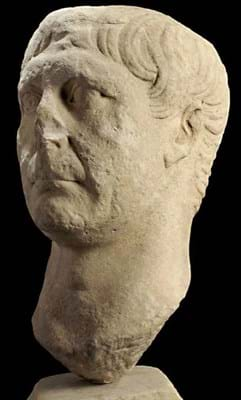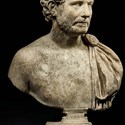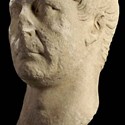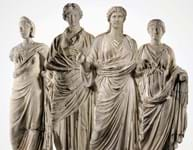The most numerous to have survived are the marble busts from the Roman empire. Markedly different to other artistic traditions thanks to their ‘warts and all’ realism, Roman portraiture developed from the belief that a person’s individuality existed wholly in their facial features.
At auction, condition, provenance, sitter and size of a Roman bust can greatly affect prices, which typically vary from a few hundred pounds to several million.
A large well-preserved example, consigned from The Denver Art Museum, where it had been since 1965, took top honours at Sotheby’s antiquities sale in London.
The 2ft 6in (76cm) high Roman imperial carving from the 2nd century AD depicts the hard gaze of a high-ranking military officer identified from the military cape (paludamentum) over one shoulder.
Estimated at £300,000-500,000, the bust was pursued by both European and London dealers in the room before it was knocked down at £600,000 to sculpture dealer Daniel Katz on the phone.
A more weathered bust of the Roman emperor Trajan featured among the top lots at Chiswick Auctions (22% buyer’s premium) on June 14.
The 15in (39cm) high carving, depicting a stoic and austere clean-shaven emperor, had resided in the same English private collection for half a century. It sold to the trade on bottom estimate at £8000.

Munich auction house Hermann Historica sold this marble bust of Emperor Hadrian for €75,000 (£65,200).
In Germany, Munich auction house Hermann Historica (23% buyer’s premium) featured a marble bust of Emperor Hadrian for its antiquities sale on April 27-28.
Crafted during the early years of Hadrian’s reign (117-138 AD), the portrait was described by the saleroom as in ‘pristine’ condition. It had belonged to an Italian politician before it sold to a dealer, who consigned it to the auction house.
The slight inclination of the head, the arrangement of hair, the moustache and slightly curly beard, are typical features of the Hadrian busts carved immediately after his accession to the throne and occasionally later on. It sold for €75,000 (£65,200).


















